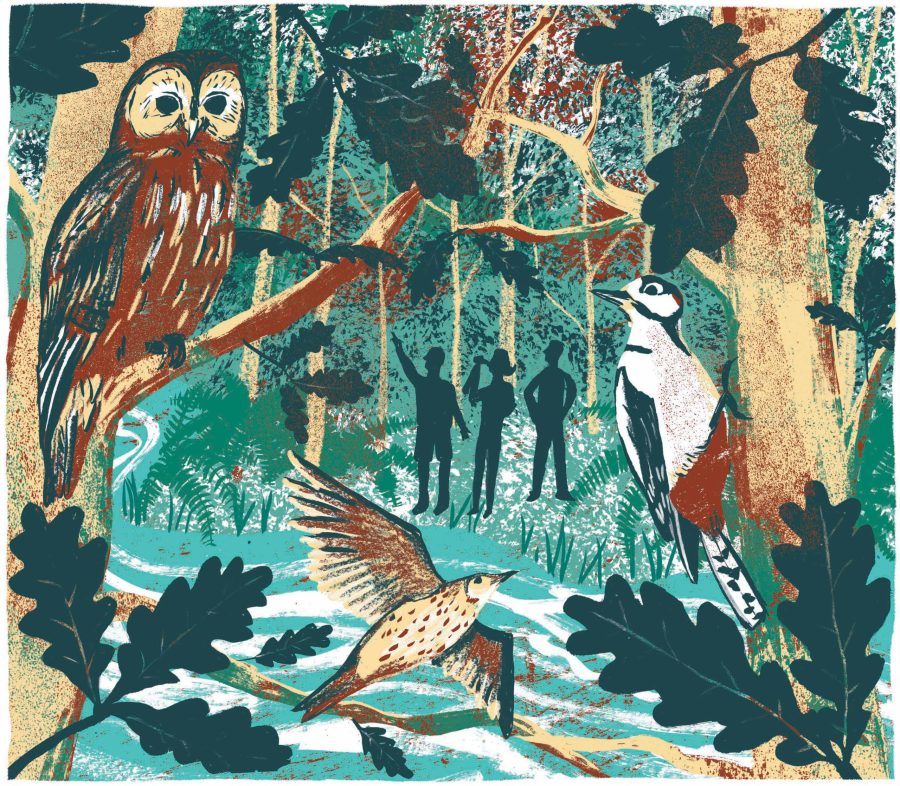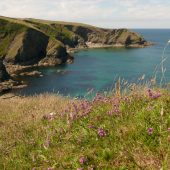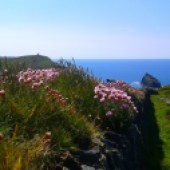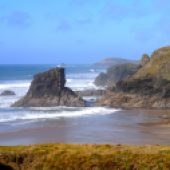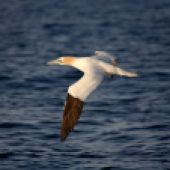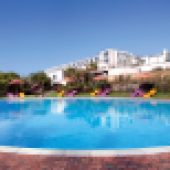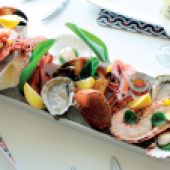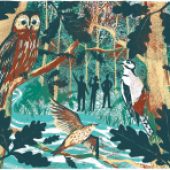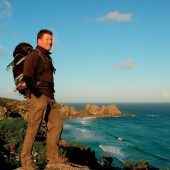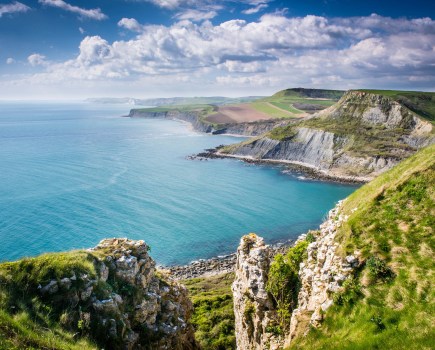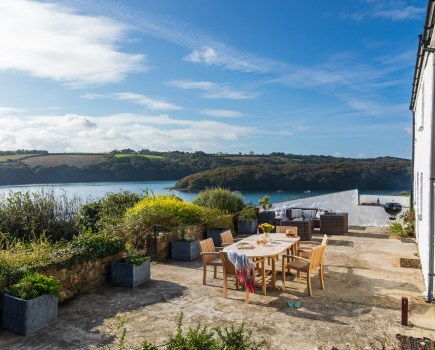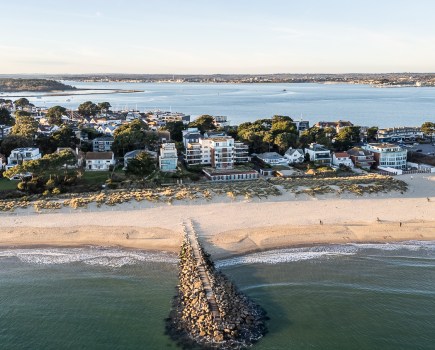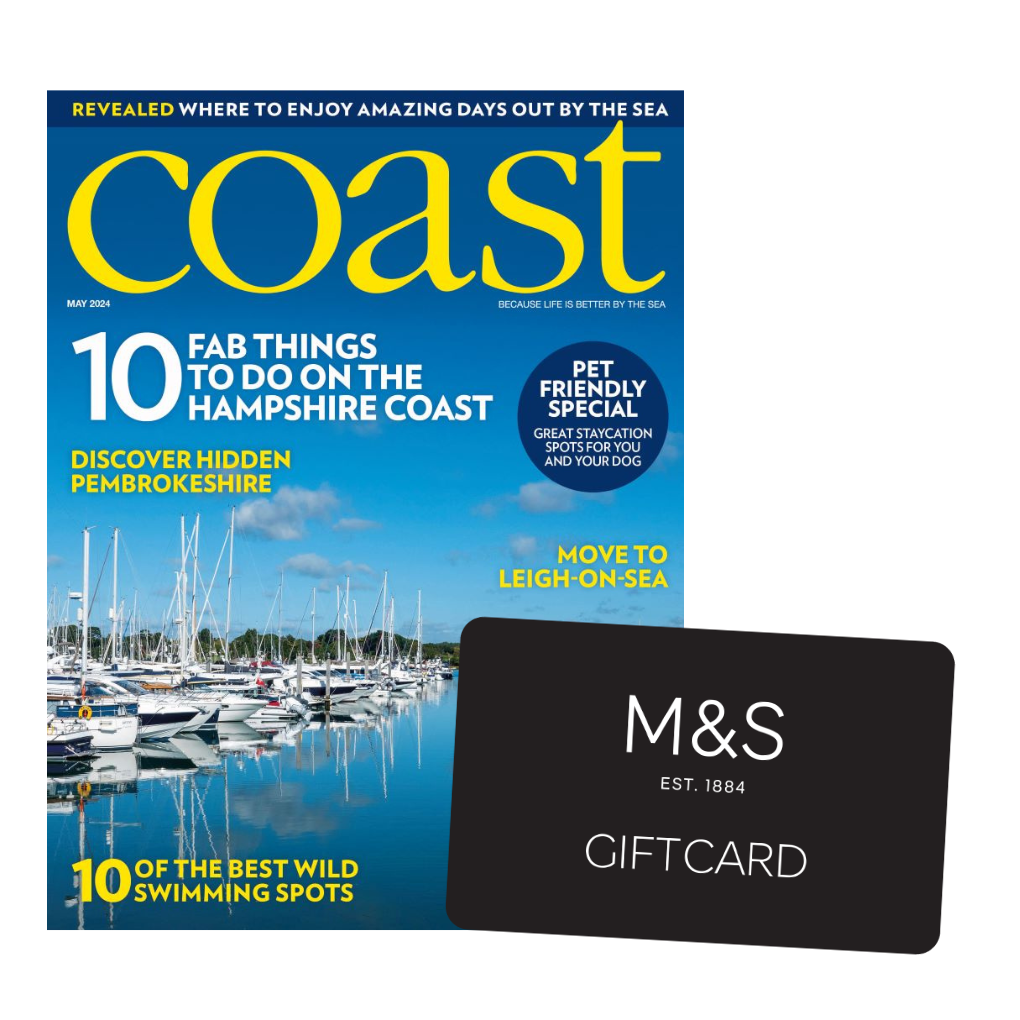We discover how a guided walk can decode nature’s secrets and reveal the rich wildlife that surrounds us. Words: Alex Fisher Illustration: Tom Jay Photographs: Dave Chapman Photography and Steve Crummay
We follow a narrow, winding river into the forest where the thick canopy of oak and sycamore becomes an umbrella to the rain. Here, moss-covered rocks and tall bulrushes line the riverbank. Dense ferns swirl beneath the tree trunks and salt-tolerant alexanders pepper the path, most likely having self-sown from a nearby garden where they were once cultivated as a vegetable and medicine.
Our guide – Steve Crummay from Explore in Cornwall – raises his hand, indicating for the small group of walkers to stop beside a bend in the river. Then he asks us to listen: the stream burbles and sloshes over stones, raindrops drip from leaf to leaf making their way down to the forest floor, and now that we are silent, we hear the birds. The hu-hoooo, Steve tells us, is a male tawny owl, and the chattering krrrr is a mistle thrush announcing our arrival in its territory. Steve points to where a great spotted woodpecker is drumming his bill against a tree trunk and we all get to see this striking bird with his red, black and white plumage.
Next, Steve searches the rocks by the creek. Here, he finds otter droppings, or spraint, which he breaks apart to reveal the bones inside from fish that the otter caught in the sea nearby, where it hunts before returning to this fresh water stream to wash the salt from its fur.
The idea of a guided walk appealed to me because I imagined I wouldn’t need to read a map and I’d have the company of like-minded strangers who enjoyed the outdoors as much as I did. What I hadn’t realised was how a guide might decode nature’s clues and allow the walker to enter into a more intimate relationship with the landscape. It’s as though our guide has peeled back a veil, revealing the richness of the wildlife around us.
‘This is exactly why I run guided walks,’ Steve explains. ‘As a conservation manager I began to spend too much time at meetings, and not enough time in the natural world. What I have learned is that I get the most satisfaction and excitement from bringing people into closer contact with nature, especially when I can reveal to them a part of that world they would not have known or experienced otherwise.’
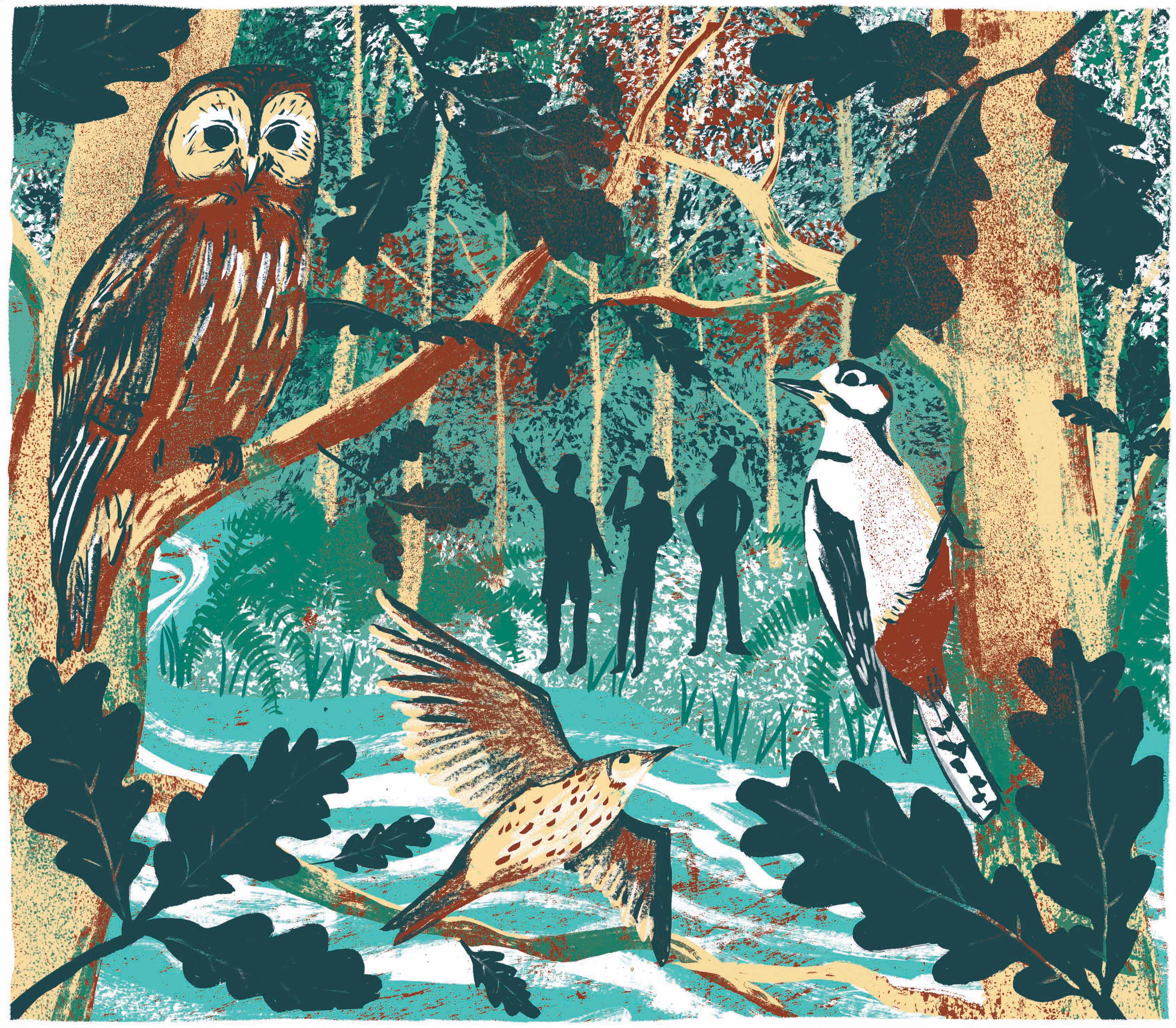
We continue our walk along the coast, joining the South West Coast Path at Treyarnon. From here we’ll travel across high cliffs and broad, sandy beaches back to the Bedruthan Hotel, where we’re staying. Steve, who has been running guided walks as part of his work in countryside conservation for over 30 years, encourages us to engage all of our senses during the walk, and this includes taste. Sea beet, we discover – which grows wild around the edges of the beaches – is a delicious alternative to spinach, and great for wrapping up freshly caught mackerel before baking. Sea scurvy grass, with its tiny white flowers in the spring, has high levels of vitamin C, and was carried on ships to prevent scurvy, and the yellow flower of the gorse bush actually has a sweet, aromatic flavour that is great for making wine.
As we climb out of the coves and onto the cliffs we are able to enter the world of the seabirds. Here we see gulls, fulmars and shags – the iconic diving bird that has to sit spreading its wings to dry, as they don’t have oiled feathers. Steve spots a gannet feeding, and we lift our binoculars to watch as this huge bird, with a wingspan of two metres, plunges into the ocean at 60 mph.
Moments later Steve points out a peregrine kill site. Here, just hours earlier, he tells us, a peregrine falcon has eaten its lunch. Steve can tell the kill happened that day because the feathers of the prey are still relatively dry, intact, and haven’t been dissipated by the wind. But how does he know it was a peregrine falcon? ‘You can tell,’ he picks a feather from the grass, ‘that this bird wasn’t killed by a mammal. A fox, for example, would tear out the feathers, whereas these –’ he shows me, ‘– are plucked by the bird’s beak.’ I’m amazed to discover that the peregrine falcon is the fastest living creature on earth, and reaches up to 200 mph when making a kill such as the one we discovered.
With each step we learn more about the area we’re visiting. Although Steve’s background is in nature conservation he also has great local and historic knowledge. The wind is up now and we are being splattered with rain as we approach the sea stacks known as Bedruthan Steps. Below, waves break on the rocks, which are constantly changing and eroding with the onslaught of the sea. So, it is hard to imagine this seemingly wild and remote spot as the popular Victorian tourist destination Steve tells us it once was. ‘Visitors came in their carriages back then for the same reasons we come today, to marvel at the dramatic natural landscape.’
We’re on the final mile of our journey; stonechat – so named because their call sounds like pebbles knocking together – flutter around us, as a skylark sings high above our heads. Before I came on this guided walk I thought I’d feel less connected to the natural surroundings because I wasn’t walking alone, but in fact the opposite has been true. Instead, I’ve learned that every stone, every plant, every feather has a story to tell, and our guide has been able to reveal to us what that narrative is.
To read more walking features visit here, or have a look at the magazine.
If you’re searching for a staycation hotspot for your Cornish break, try these top Cornwall hotels. And if you’re wanting fun for the whole family without having to leave behind your beloved pooch, try out these dog-friendly hotels in Cornwall.
NEED TO KNOW
WHERE TO STAY
The Bedruthan Hotel organises the walking breaks with Steve Crummay. This contemporary hotel has stunning sea views, two excellent restaurants and an extensive spa with an indoor and outdoor pool.
The next walking weeks are scheduled for mid-May and late September 2016.
Full day walks £30 per person, half day walks and dusk walks £22.50 per person, all walks for children under 14 £10 per child. Private guided walks are also available for £70 for the whole day – please enquire when booking.
To find out about future walking breaks with Steve call 01637 860860 or email [email protected] (bedruthan.com).
To find out more about Steve Crummay visit exploreincornwall.co.uk.
HOW TO GET THERE
Bedruthan Steps overlooks Mawgan Porth Beach, just north of Newquay. The nearest train station is Newquay, and the mainline station stop from London is Bodmin Parkway, a 30-minute drive away. Newquay Airport is 10 minutes’ drive away (newquaycornwallairport.com).
With thanks to Swarovski OPTIK for the loan of their fantastic binoculars.

